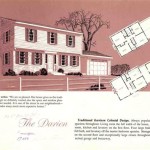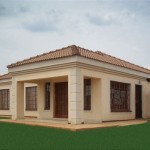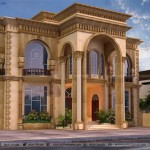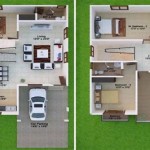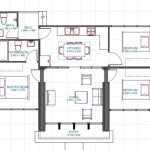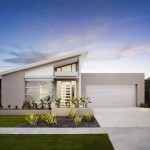A Good Plan for Your House: Key Considerations
Building or renovating a house is a significant undertaking. A well-structured plan is crucial for managing the project effectively, ensuring the final result aligns with expectations, and staying within budget. This article explores key aspects of creating a comprehensive house plan.
Defining Needs and Objectives: The foundation of any good house plan lies in a clear understanding of the needs and objectives of the occupants. Consider the number of bedrooms and bathrooms required, desired living spaces, and any specialized areas like a home office or a workshop. Lifestyle factors, such as entertaining habits and hobbies, should also inform the planning process. Clearly defined needs and objectives act as a roadmap for subsequent design decisions.
Site Analysis: A thorough site analysis is paramount. Understanding the topography, soil conditions, prevailing winds, and sun exposure can significantly influence the house's design and orientation. Consider local regulations regarding building setbacks, height restrictions, and permissible land usage. Integrating the house harmoniously with the site maximizes its potential and minimizes environmental impact.
Budgeting and Financing: Establishing a realistic budget early in the planning process is essential. Detailed cost estimations for materials, labor, permits, and contingency funds help prevent financial overruns. Secure pre-approved financing to understand borrowing capacity and establish a firm financial framework for the project.
Architectural Design: The architectural design phase translates the defined needs and site analysis into a tangible blueprint. Collaborating with a qualified architect ensures the design addresses functional requirements while adhering to building codes and aesthetic considerations. The architectural drawings detail the house's layout, dimensions, structural elements, and building materials.
Space Planning and Functionality: Effective space planning optimizes the flow and functionality within the house. Consider the relationship between different areas, ensuring smooth transitions and efficient use of space. Prioritize natural light and ventilation, creating comfortable and healthy living environments. Thoughtful space planning contributes significantly to the overall livability of the house.
Material Selection: Choosing appropriate building materials involves balancing cost, durability, aesthetics, and environmental impact. Research various options for roofing, siding, flooring, insulation, and interior finishes. Consider the local climate and maintenance requirements when making material selections. Sustainable building practices can be integrated through the use of eco-friendly materials.
Energy Efficiency: Incorporating energy-efficient features in the house plan reduces long-term operating costs and minimizes environmental impact. Consider high-performance insulation, energy-efficient windows and doors, and energy-saving appliances. Explore renewable energy options such as solar panels or geothermal heating and cooling systems. An energy-efficient design contributes to both financial savings and environmental sustainability.
Building Codes and Regulations: Adhering to local building codes and regulations is crucial for ensuring the safety and legality of the construction. Research zoning ordinances, building permits, and inspection requirements. Working closely with the architect and contractors ensures compliance with all applicable regulations throughout the building process.
Contractor Selection: Choosing reputable and experienced contractors significantly impacts the project's success. Obtain multiple bids and thoroughly vet potential contractors, checking references and verifying licenses and insurance. A clearly defined contract outlines the scope of work, payment schedules, and project timelines. Effective communication with the contractor throughout the construction process is essential.
Project Management: Developing a detailed project schedule helps manage the construction process effectively. Establish clear milestones, timelines, and communication protocols. Regularly monitor progress against the schedule and address any delays or unforeseen issues promptly. Effective project management ensures the project stays on track and within budget.
Interior Design: The interior design phase focuses on the aesthetics and functionality of the interior spaces. Consider furniture layout, color schemes, lighting design, and decorative elements. Integrating personal style and preferences creates a comfortable and inviting living environment. Collaborating with an interior designer can help optimize space utilization and achieve desired aesthetic outcomes.
Landscaping and Outdoor Spaces: Planning the landscaping and outdoor spaces enhances the overall appeal and functionality of the property. Consider the integration of patios, decks, gardens, and walkways. Thoughtful landscaping complements the house's design and creates enjoyable outdoor living areas. Addressing drainage and irrigation needs ensures the long-term health and viability of the landscaping.
Maintenance and Upkeep: Developing a plan for ongoing maintenance and upkeep is essential for preserving the house's value and functionality. Regular inspections, cleaning, and preventative maintenance help identify and address potential issues before they escalate. A well-maintained house provides a comfortable and safe living environment for years to come.
Developing a robust house plan requires careful consideration of various factors. A thorough plan, addressing the needs of occupants, site conditions, budget constraints, and building regulations, sets the stage for a successful construction or renovation project. By meticulously planning each stage, individuals can create a functional, aesthetically pleasing, and sustainable home.

What Are The Key Characteristics Of A Good Floor Plan House Plans In N Design Home Elevation Front

Gilliam New House Plans Southern Living Cottage

What Makes A Good Floor Plan

Floor Plans Learn How To Design And Plan

Bungalow Floor Plans House By Builder Now

Unique Lake House Plans W Curved Wall Filled With Windows

House Plan Offers Lots Of Open Spaces

Good Floor Plan Bad Plans Bungalow New House

House Plan With Great Flow 24327tw Architectural Designs Plans
How To Improve My House Plans Quora


